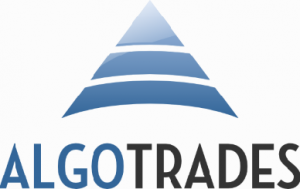Automated Trading Systems for Long Term Gains

First let’s take a quick look at the advantages which algorithmic trading can provide:
- Logically designed automated trading systems often outperform human-driven trading because systems take advantage of all high probability setups within a strategy. At the same time, individuals will skip trades or alter positions due to various cognitive biases and emotionalism.
- Through data-mining, analysis, and testing, we can discover subtle patterns in market behavior that most humans would not be able to identify.
- Automated systems are repeatable, while a human-driven strategy is subject to human whims. Consistency of decision-making is vital to the long-term profitability of trading systems.
- The automated trading systems are responsive to rigorous statistical analysis and changes in market trends and volatility. The best-automated trading systems are dynamic, which is crucial in measuring/forecasting expected future performance and the probability that the system’s existence is due to luck rather than true power.
- Ability to filter and boost performance: The best-automated trading systems are used in two ways. First, they generate all possible trade setups within a strategy. And the second and most important is for the system to filter out the lower probability setups to allow only the best trades to be executed automatically. This boosts automated trading strategies’ performance greatly and can be the difference between a profitable or losing system in the long run.
Two Methods Required to Build an Automated Trading System
Whether your goal is to develop a stand-alone automated trading system or a filtering system to boost the performance of an existing trading strategy, there are two approaches that must be implemented for long term trading success.
1. Rules Based (IF/THEN rules):
A rule-based trading system requires that you specify the exact rules that make the trade decision. A simple example of an automated rules-based trading system: IF the short-term moving average exceeds the long-term moving average, THEN hold a long position during the next bar.
2. Predictive Model:
Predictive employs mathematically sophisticated software to examine indicators derived from historical data such as price, volume, volatility and many other things, with the goal of discovering repeatable patterns that have predictive power. A predictive model is a mathematical or logical formula that uses specific patterns to forecast future price a certain amount of time into the future through time, bars, or ticks.
Automated Trading System has some advantages over a rule-based system:
- Software can discover complex patterns or be buried under random noise that a human would never spot.
- Once the best-automated trading system is developed, it is usually easy to tweak. It can filter out trade signals with a lower probability of success, and because there are fewer signals, the system has a higher likelihood of success.
- The best trading system models can extract maximum information from a data set that complements human intuition systems (rule-based). Predictive modeling, even its simplest form, linear regression, is superior to human intuition for predicting and trading only an automated trading system entry and exit points.
- Predictive trading strategies find patterns that repeat often enough to be profitable. Once discovered, the system will analyze the data for the pattern to reoccur for a possible trade setup. Based on historical observations, the system will then be able to predict whether the market will rise, fall, move sideways.
Conclusion:
In short, the idea behind what I feel makes the automated trading system is a combination between a rule-based and predictive model. I see rules-based trading more to do with position and money management side of things while predictive may contain more information that can be used to predict price targets, stops, trends, cycles etc…
In 2006 myself and a team of programmers have developed what we believe to be an automated trading system for casual traders and investors. It is based around the SP500 index which provides us with a low volatility financial instrument for trading along with liquidity for virtually unlimited position sizes for scalability.
Click Here: Learn more about our Algo Trading Systems Now
Chris Vermeulen
